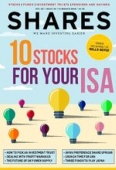Archived article
Please note that tax, investment, pension and ISA rules can change and the information and any views contained in this article may now be inaccurate.
Five easy steps to picking the best investment trusts

With 404 investment trusts trading on the UK stock market, investors wanting to put their money into this space are spoiled for choice. The hard part is boiling down the selection to a more manageable number so you can undertake more in-depth research.
This article will talk you through some of the ways to filter the market and find the best investment trust(s) for your needs.
STAGE ONE: DEFINE YOUR PERSONAL SITUATION
What is your investment goal, your time horizon and appetite for risk? You need to establish these parameters in order to work out the types of investments that could achieve your goal.
For example, if you want to save money in order to make a large purchase in five years’ time, you don’t really want to invest in high risk assets. However, if you have more time on your side, you may be more comfortable to take higher risks.
If you need to hit a specific monetary target such as £50,000 in 10 years, you would need to work out how much you can afford to save on a regular basis and then work out the level of annual return you’d need to hit your goal.
For example, you’d have to save £345 per month and achieve 4.5% annual growth to hit the £50,000 target, assuming 0.75% annual fees. If you can only afford £300 a month, you would have to achieve 7.5% annual growth to hit the £50,000 target in 10 years. That would mean you would have to seek higher risk investment trusts.
STAGE TWO: INCOME, GROWTH OR BOTH?
Investment returns come in two forms: capital returns which is the gain on the value of your shares; or income in the form
of dividends.
An estimated 85% of investment trusts pay a dividend. Most will try to grow the value of capital each year as well. Infrastructure funds, for example, will probably have much lower capital growth than something like a smaller companies investment trust.
The Association of Investment Companies (AIC) has a good filter on its website – www.theaic.co.uk/aic/find-compare-investment-companies – which lets you screen the investment trust universe by ‘growth’, ‘growth and income’ or ‘income’.
STAGE THREE: SECTOR, GEOGRAPHY OR ASSET FOCUS
There truly is something for everyone in the investment trust space, meaning you can either buy shares in a broad-based product or one with a niche focus.
For example, you can search by sector such as private equity, property or infrastructure. You can search by geographic focus such as emerging markets, Europe or North America. Or you can select investment trusts that invest in equities (stocks and shares), bonds or even debt.
Some investment trusts position themselves in different ways. For example, they start off by saying they can invest anywhere in the world and then reduce their investable universe by having strict criteria such as only investing in high quality companies or innovative ones disrupting markets.
You’ll need to manually search for these types of trusts as online filtering systems such as the one from the AIC only have broad search criteria. We’ll tell you how to spot the more focused trusts in a second.
STAGE FOUR: HOW TO NARROW YOUR LONG LIST
By now you should have built a long list of investment trusts which match your criteria, albeit hopefully a much shorter list than the initial starting point of 404 trusts.
At this point in the research we like to visit individual investment trust websites and financial websites like sharesmagazine.co.uk and Morningstar.
You should look for five specific pieces of information: investment process, fund manager track record, clarity of communication, discount or premium to net asset value (NAV) and past performance.
The investment process is essentially what a fund manager wants to achieve with their fund and how they will do so. Examples of processes include:
• Backing young companies which have the potential to be much bigger in the future and which could disrupt traditional markets.
• Finding companies which generate high returns on the money they invest in their business.
• Building a portfolio of companies tied into thematic investment topics such as profiting from an ageing population.
A good investment trust should clearly display this information on their website. For example, under its ‘about’ section on asset manager Artemis’ website, Mid-Wynd International Investment Trust (MWY) says its strategy is to ‘grow real wealth by investing in high-quality stocks worldwide’. It then provides five points which summarise its investment approach.
It also has articles about the investment trust where you can learn about portfolio decisions and how the manager thinks.
In contrast, someone like Rights & Issues Investment Trust (RIII) is the complete opposite end of the spectrum. We couldn’t find a dedicated website for the trust, although fund service provider Maitland has a small section on its website about Rights & Issues detailing the investment policy albeit this isn’t communicated in any depth.
IS THE TRUST CHEAP OR EXPENSIVE?
It is important to ascertain whether you are buying exposure to assets for more or less than they are worth. Investment trusts can trade at a premium or discount to their net asset value (NAV).
London Stock Exchange’s website publishes the latest NAVs for trusts, often on a daily basis, although that varies from trust to trust.
If we take Mid-Wynd as an example, its shares were trading at 489p on 8 March and its NAV was 475.97p. So anyone buying the shares on that day would have paid 2.7% more than the value of its assets.
HOW HAVE TRUSTS PERFORMED IN THE PAST?
We’re regularly told that past performance does not equal future performance. However, it is worth taking a look to see how trusts have performed historically versus the broader stock market. After all, many investors wouldn’t want to invest in something that has a tendency to underperform.
However, you also have to consider that a trust’s investment strategy may have been out of favour for certain periods. For example, a value-led strategy may have lagged one that chases growth stocks when momentum is the winning investment style.
Morningstar publishes annual returns data on its website for each investment trust. You can compare how a share price has performed versus net asset value and the benchmark.
Many investment trusts think they’ve done a good job if they’ve beaten the benchmark, even though that may still have resulted in losing money for an investor.
If the index falls 10% in a year and an investment trust falls 5%, strictly speaking the latter has outperformed. But is that a good outcome for the investor? We prefer fund managers who do their best to avoid a capital loss and are focused on delivering long-term positive returns rather than simply measuring their performance against a benchmark.
SOURCE OF INFORMED COMMENT
We find it is useful to read various research notes or expert comment on trusts before considering an investment. The general public has access to a wide range of information on trusts, far more than you’ll
get for open-ended funds like unit trusts and Oeics.
Kepler, QuotedData, Edison, FundCalibre and Morningstar are all good sources of informed comment. You will probably have to set up accounts with each provider to read their research notes and analyst comment but access should be free of charge.
Their information may range from brief comment on an investment trust to an in-depth review of a portfolio and the fund manager.
Shares is also a good source of material as we have a weekly investment trust section in our digital magazine. We regularly interview fund managers and analyse the broader investment trust space. We also have privileged access to industry experts and are
able to include some of their analysis in our articles.
Our comment is 100% independent whereas some of the aforementioned sources will have been commissioned by certain investment trusts to produce reports. Nonetheless, most of the reports are still worth reading to gain valuable insight into the trusts.
STAGE FIVE: OTHER POINTS TO CONSIDER
You should have now slimmed down your list to a more manageable number. There are still a few more points to consider before you make your final selection.
Costs can vary widely across the investment trust space. While you may think paying 0.5% or 1.5% is neither here nor there; costs can add up over time and eat into your investment returns. Therefore you need to look closely at all costs associated with the product and see if they are justified based on historical performance.
Another figure to check is gearing which represents the amount of debt to equity. Investment trusts can use debt to invest in more companies or other assets and boost the value of a portfolio. It creates a bigger pool from which to earn dividends and/or generate capital gains.
While this can be a useful tool by which to enhance returns, trusts with a lot of debt can underperform in a falling market due to the magnifying effects of gearing.
Finally, it is worth looking at the board of directors as they have the
power to sack the fund manager or change the mandate of the investment trust. Check to see if board members have suitable skills and experience for the job. Ideally the board should also own some shares so they have got the same vested interest as you. (DC)
Important information:
These articles are provided by Shares magazine which is published by AJ Bell Media, a part of AJ Bell. Shares is not written by AJ Bell.
Shares is provided for your general information and use and is not a personal recommendation to invest. It is not intended to be relied upon by you in making or not making any investment decisions. The investments referred to in these articles will not be suitable for all investors. If in doubt please seek appropriate independent financial advice.
Investors acting on the information in these articles do so at their own risk and AJ Bell Media and its staff do not accept liability for losses suffered by investors as a result of their investment decisions.
Issue contents
Big News
- AJ Bell customers given priority access to company’s IPO share offer
- An increasing number of investment trust dividend heroes
- Spring Statement reveals (slightly) improved economic picture
- Gem Diamonds is on a roll with high quality discoveries
- Time is running out for GKN shareholders to vote on Melrose takeover offer
- Labour strike risk could lead to higher copper price
- Why is the dollar struggling?
- Big fall in London house prices
- Aviva under fire for plan to cancel high-yielding shares

 magazine
magazine








